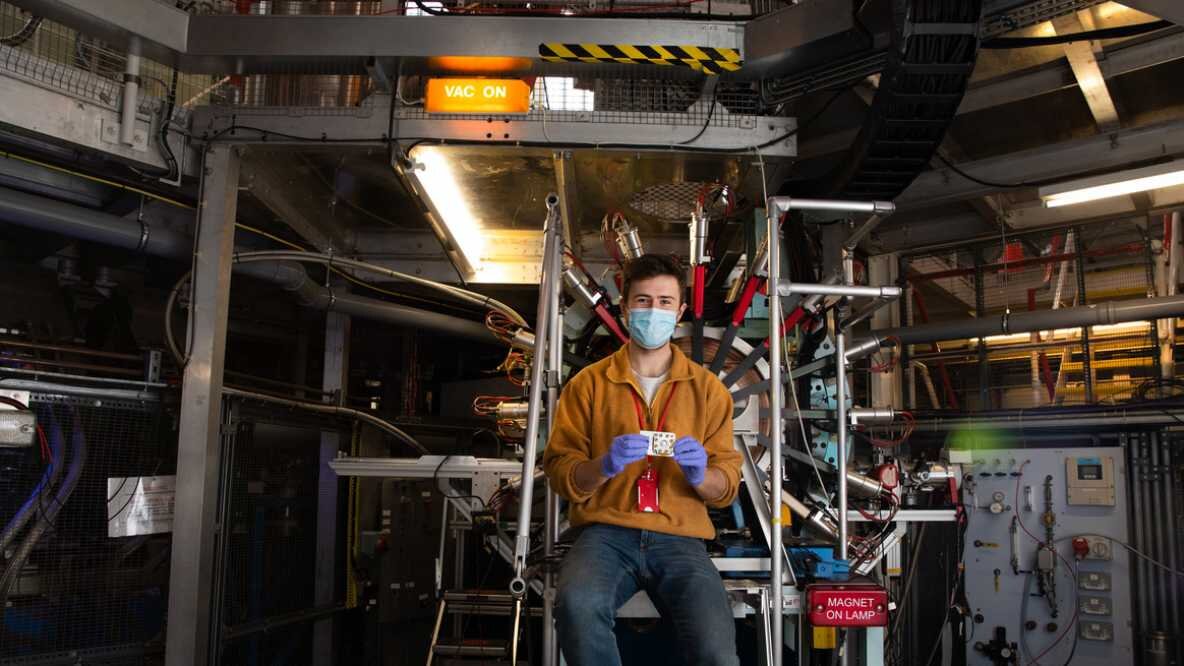Understanding the behavior of battery materials during charging and discharging is essential for improving the performance of existing batteries and developing new materials for future batteries. One such material that has become increasingly significant for future batteries is LiNi0.8Mn0.1Co0.1O2, also known as NMC811. However, this material often experiences an irreversible capacity loss between the first charge and discharge, which may be due to kinetic barriers to diffusion of the lithium ions in the material. To understand this issue, Innes McClelland, an ISIS facility development student during his Ph.D. with TUoS, developed a cell for testing battery materials during operation using muon spectroscopy and used it to study NMC811.
Muon spectroscopy is a useful tool for studying battery materials since it can probe the diffusion of ions on a local scale, largely avoiding interfacial or grain boundary effects. However, previous muon experiments on battery materials have studied the components individually, outside of a battery, lacking insight into the behavior of materials during operation. Thus, Innes McClelland, in collaboration with his co-supervisor beamline scientist Peter Baker, engineers from ISIS, his supervisor Professor Serena Cussen at the University of Sheffield, and colleagues from the Faraday Institution next-generation cathode project FutureCat, designed a cell for doing operando muon spectroscopy measurements.
Using the new setup, they measured the lithium diffusion characteristics within the NMC811 material at over 70 points during the first cycle. They found that the lithium diffusion was faster at a higher state of charge but never restored to the same value as in the pristine sample. Combining the differing measurement properties of muon spectroscopy with electrochemical methods, they found that slow diffusion was more prevalent on the surface of the cathode, rather than in the bulk material. This suggests that processes focusing on stabilizing the surface of the material are likely to be more successful at improving its properties.
Innes McClelland explains, “The exciting development of operando muon spectroscopy opens up a wide range of opportunities for researchers working on energy storage materials, allowing a unique perspective of ionic diffusion from inside the materials themselves whilst in operation.” He looks forward to future studies that can develop the field towards a variety of battery chemistries.
In conclusion, the use of muon spectroscopy to study battery materials during operation is a promising development that can provide insight into the behavior of materials during charging and discharging. The cell developed by Innes McClelland can be used to study the lithium diffusion characteristics within the NMC811 material, providing valuable information for improving its properties.



Leave a Reply